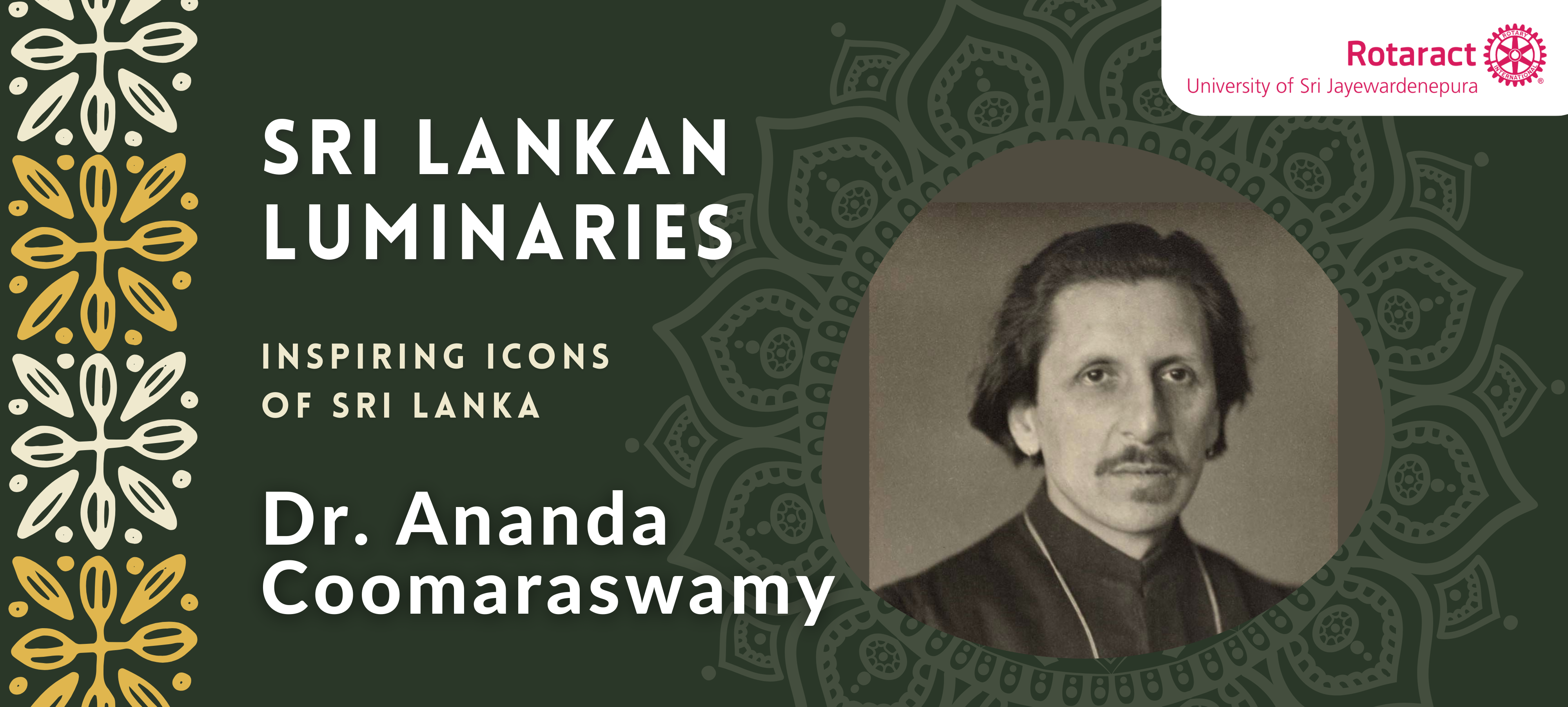Dr. Ananda Coomaraswamy (1877-1947) was a pioneering figure in the field of art history, particularly known for his profound insights into art and philosophy. Born in Colombo, Sri Lanka, Coomaraswamy’s early life was marked by a diverse cultural exposure, fostering a deep appreciation for the traditions of both the East and the West.
Coomaraswamy’s scholarly journey gained momentum during his years at University College London, where he pursued both scientific and humanistic studies. His wide-ranging interests included botany, geology, and Sanskrit literature. This interdisciplinary foundation would later become a hallmark of his approach to art and culture.
In the early 20th century, Coomaraswamy’s focus shifted to Indian art. His seminal work, “The Transformation of Nature in Art,” published in 1934, established him as a leading authority on the subject. This magnum opus explored the spiritual underpinnings of art, tracing the evolution of artistic expression in India through the lens of metaphysics and symbolism.
One of Coomaraswamy’s key contributions was his insistence on understanding art within its cultural and religious context. He argued that divorcing art from its spiritual moorings led to a superficial appreciation that failed to capture the true essence of the work. This perspective challenged prevailing Eurocentric notions of art history and laid the groundwork for a more holistic understanding of artistic creation.
Coomaraswamy’s tenure as the curator of the Indian section at the Boston Museum of Fine Arts further solidified his reputation. During this time, he not only curated exhibitions but also actively acquired a diverse array of artifacts, expanding the museum’s collection and promoting a nuanced understanding of Indian art in the United States.
In addition to his scholarly pursuits, Coomaraswamy was a prolific writer. His essays, collected in volumes like “The Dance of Shiva” and “The Door in the Sky,” delved into topics ranging from aesthetics to mythological symbolism. His prose was characterized by a poetic eloquence that mirrored the beauty he found in the art he studied.
Coomaraswamy’s intellectual legacy extended beyond academia; he played a crucial role in fostering a renewed interest in traditional craftsmanship. He advocated for the preservation of indigenous artistic techniques and critiqued the dehumanizing effects of industrialization on craftsmanship. His efforts in this regard contributed to the Arts and Crafts Movement and influenced subsequent generations of artists and artisans.
Despite his profound impact, Coomaraswamy’s work was not without controversy. Some critics challenged his interpretations, arguing that his emphasis on spirituality overshadowed the socio-political dimensions of art. Nevertheless, his unwavering commitment to bridging the gap between the sacred and the artistic left an indelible mark on the discourse surrounding Indian art.
Ananda Coomaraswamy’s legacy lies in his ability to transcend disciplinary boundaries and offer a holistic understanding of art. His work continues to inspire scholars, artists, and enthusiasts, prompting a deeper exploration of the interconnectedness between spirituality, culture, and artistic expression.
Written by: Rtr. Methmi Ranasinghe
Graphic design by: Rtr. Sathmi Dinanja



0 Comments